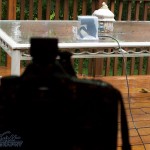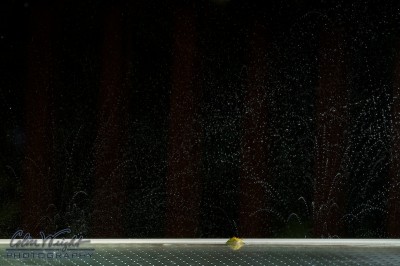OK, so I’ll admit it. I’m an Apple fanboy, and have been since making the switch to Macs in 2005. For geek profile purposes, I would tell ya that I’m an early adopter, and a realist about problems that may show up. It’s hardware, and software, and even though there’s tight synergy granted from both sides of that coming from the same complex in Cupertino, I recognize that things will go bump every now and then.
That said, let me introduce you to my latest saga with the Apple ecosystem.
AirDrop is a pretty cool technology that allows Macs, and now iPhones with iOS 8, to create short-lived, ad hoc networks to transfer files. This is pretty cool, especially if you use your iPhone as a primary form of photography (And for Rick and Tom, I’m not naming names here!), and for probably other uses as well. Once I got both Yosemite and iOS 8.1 down, I wanted to give AirDrop a try. The first prompt I got was to turn on the wi-fi card in my late-2013 Mac Pro cylinder.
As a note, I don’t usually keep wi-fi enabled on my Mac Pro. This machine never travels, and does some big data moves across my network, so hardwiring it at gig-e speeds just makes sense for me.
When I tried to turn on the wi-fi on my shiny cylinder o’ fun, I clicked the button on the network preferences panel… and nothing happened. I clicked it again. Nothing. And like any good techie, I continued clicking it periodically over the next few minutes. Nada.
I decided to restart my Mac, and as though by magic, I was able to turn on wi-fi in my system. I played with AirDrop, and then turned off wi-fi.
Fast forward to yesterday. I took a walk at lunch. Normally, I use a Garmin Forerunner 310XT to capture my travels, but for some reason, it was having trouble finding the satellites, so I did my walk, and then wanted to check the distance. My go-to answer for years has been Google Maps, but I figured that since Apple had included this cool Maps application on the desktop, I’d use it.
Well… it barked about not being able to find my position without wi-fi being turned on, which means the app barks incessantly about how it can’t determine my location. I even tried to feed it my location to shut it up, and it still was pretty dang insistent. I know my Mac doesn’t have a GPS device embedded in it, so it’s obviously using my wi-fi network name to figure where I am, based on the network I’m connected to. If I’m out in public, that’s pretty cool. Sitting in my house, that’s a little creepy. TMI, say I! However, that misgiving aside, I turned on my wi-fi.
Or tried to.
Once again, I was left with a wi-fi system that didn’t seem to be active, regardless of what I’d do. Once again, I restarted my machine. I paid close attention this time, and noticed that the wi-fi was on when the machine came back up. Whether I had hit the button an odd number of times, resulting in the post-reboot status being active, or if it just remembered that I was trying to turn it on, my cylindrical Mac came back up with wi-fi happy. Oh, and Maps was much happier as well.
So, what’s this mean? I’m not entirely sure. Except that I need to be planful around when I want to use AirDrop or Maps, or anything else requiring the lil’ Mac Pro to have its wi-fi enabled.
I’ve done a ton of searches on this issue. Unfortunately, there are loads of as-yet-unresolved issues with Yosemite around wi-fi performance and dropping networks, and those are clouding my searches with a lot of wild goose chases. If I had to guess, I’d bet that something is being flagged to turn on wi-fi, but can’t complete until after a restart for some reason. Or, wi-fi is really active, but all the indicators in the network preferences aren’t there. I should probably watch my Apple network gear (using my iPad or iPhone) to see if there’s every anything showing up on the router’s side, which could help narrow things down.
Just a little spot on my otherwise shiny Apple!







